Bennett, a ghost town on the Chilkoot Trail
Anyone who enjoys visiting ghost towns can keep busy exploring and researching for years in BC. Wikipedia lists 165 ghost towns in BC, although their criteria for what qualifies as a ghost town is very loose. In any list of of BC’s ghosts towns, the furthest north and one of the more remote is always Bennett, located in the far northwest corner, pinched between the Yukon and Alaska (to open an interactive map of the region in a new window, click here).
No roads reach Bennett, but a few thousand visitors arrive each year by train, boat, and float plane as well as by hiking the world-famous Chilkoot Trail. Only a single building remains standing from the hectic days of the rush to the Klondike gold fields that peaked over the winter of 1897-98, but even on a warm summer day it’s fairly easy to imagine what life was like for the tens of thousands of people who passed through the town.
The boom years in Bennett were 1897-1900, and by 1903 most people had moved on, taking almost everything with them. Wood was a valuable commodity, so that included buildings and even wharf pilings – only the church and a couple of remote cabins were left.
The walking tour map of the site will show you some of the highlights during a visit today.
A high view of the Bennett townsite, with the WP&YR railway depot in the foreground.
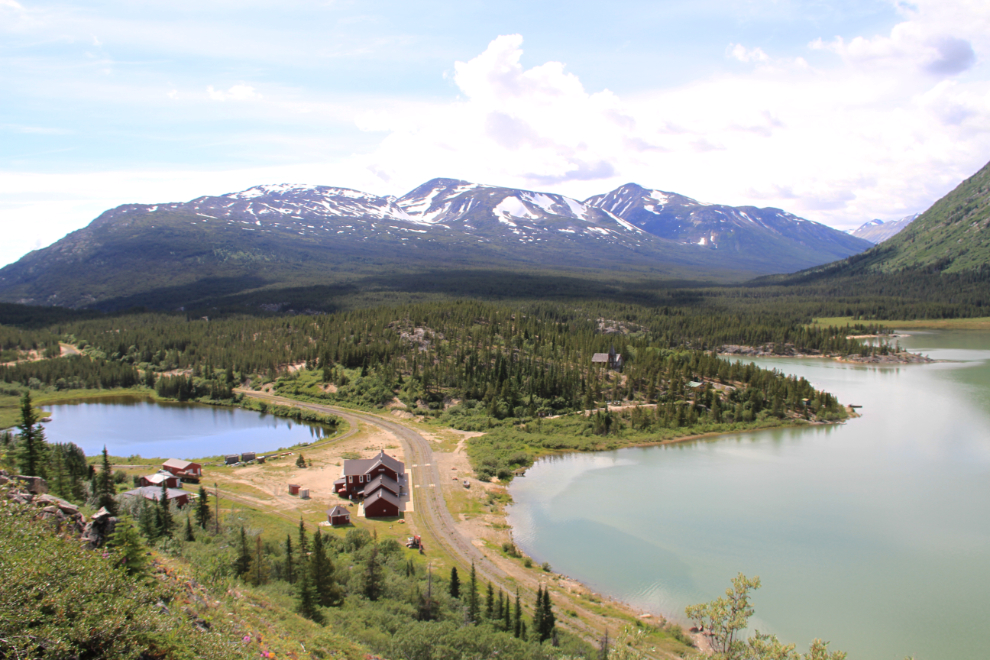
While most of the people who had come across the Chilkoot and White Pass trails used the shore of Lake Bennett as their home to await spring, not all did. Some of the stampeders were so relieved to get their mandatory ton of supplies over the mountains that they stopped at Lindeman Lake and built their boats there rather than continue on to Lake Bennett where the trees needed for building and fuel quickly became hard to get. Once the ice broke on the One-Mile River that drains Lindeman Lake into Lake Bennett, however, they realized their mistake. Running the rapids was an extremely hazardous undertaking that cost several people their lives.
The One-Mile River, with Class 3+ rapids, connects Lindeman Lake and Lake Bennett.
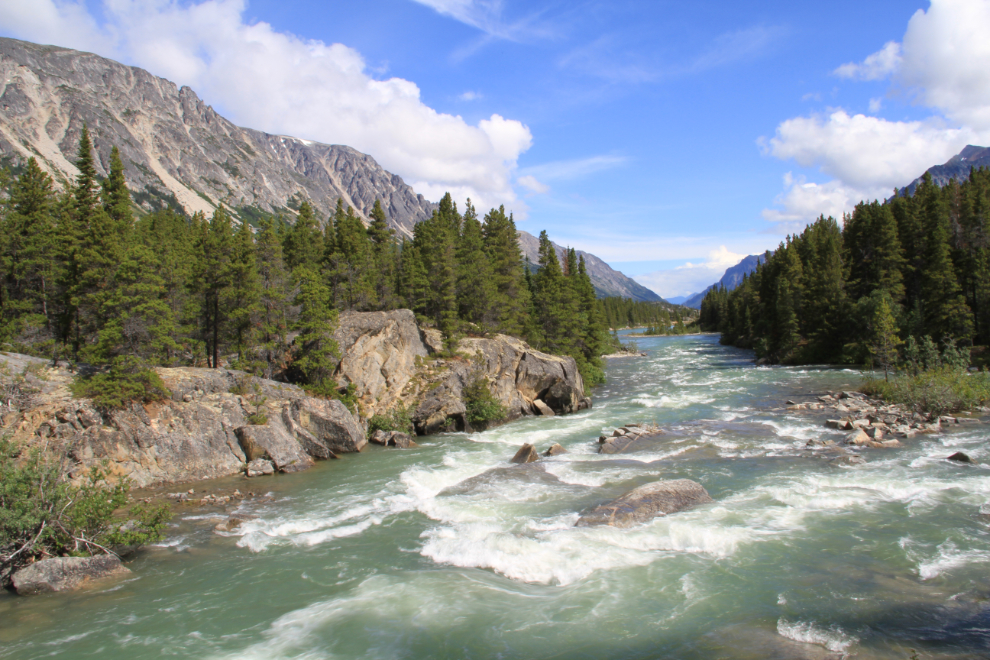
The most dramatic 2-week period in Bennett’s history occurred in late May and early June 1898. Following the break-up of the ice on Lake Bennett, over 7,000 boats were launched for the float down to Dawson City – 800 during the first 24 hours after the ice broke on May 28th. Following the departure of those 20,000 or so people, the community quickly stabilized, becoming a major service centre for the stream of humanity that continued to pass through. Within 2 years, though, the railway had been completed to Whitehorse, and Bennett died as quickly as it had been born.
Today, St. Andrew’s Presbyterian Church is the most visible reminder of the community’s heyday, and the site most visited by the people who pass quickly through on train excursions. But there is much more to see. Rotted pilings along the lake and river show where wharves, buildings and even a bridge had been located. Piles of broken glass in several locations show where some of the major hotels and saloons were – empty bottles of many colours were just tossed out the back door or at some establishments, through a hole in the floor. One of the hotels, the Arctic (later New Arctic), was co-owned by Ernest Levin and Friedrich “Fred” Trump, grandfather of famous American businessman Donald Trump. By July 1900, the New Arctic was advertising in The Bennett Sun newspaper that it was the “Newest, Neatest and Best Equipped North of Vancouver”. The hotel was the first step in the small fortune that the elder Trump left the Yukon with.
Rotted pilings hint at the activity along Bennett’s waterfront.

Piles of broken glass show the locations of hotels.

Those visitors with more time can follow the Chilkoot Trail from the church to:
* Stampeder cemetery, on a hill on the south side of the trail; 1 km/0.8 mi return. There are 22 known graves at this site, and some headstones and surrounds have been replaced or restored.
* North Lindeman beach, 4 km/1.6 mi return, is warm enough for swimming late in some warm summers.
* Bare Loon Lake, 12.8 km/7.9 mi (4-6 hours) return.
Hiking off the main trails without a Parks Canada ranger leading is strongly discouraged due to the fragile nature of the site. Much research remains to be done, and disturbing any artifacts and even rocks or logs can reduce the quality of that research.
The 1898 grave of North West Mounted Police officer E.E. Pearson at the Bennett cemetery.
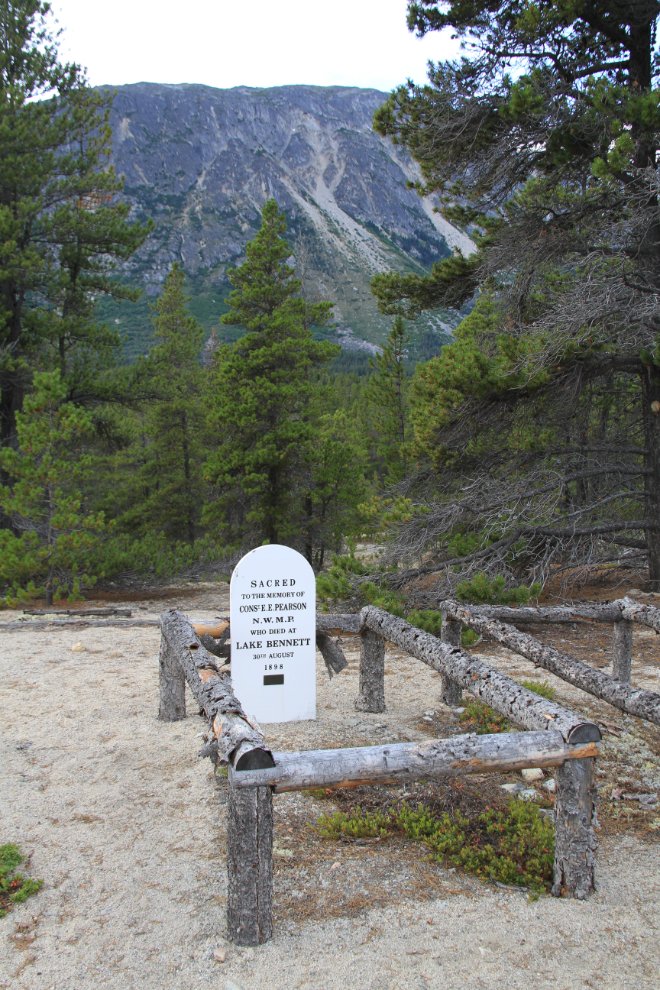
The author inspecting cabin ruins at a remote part of Bennett.
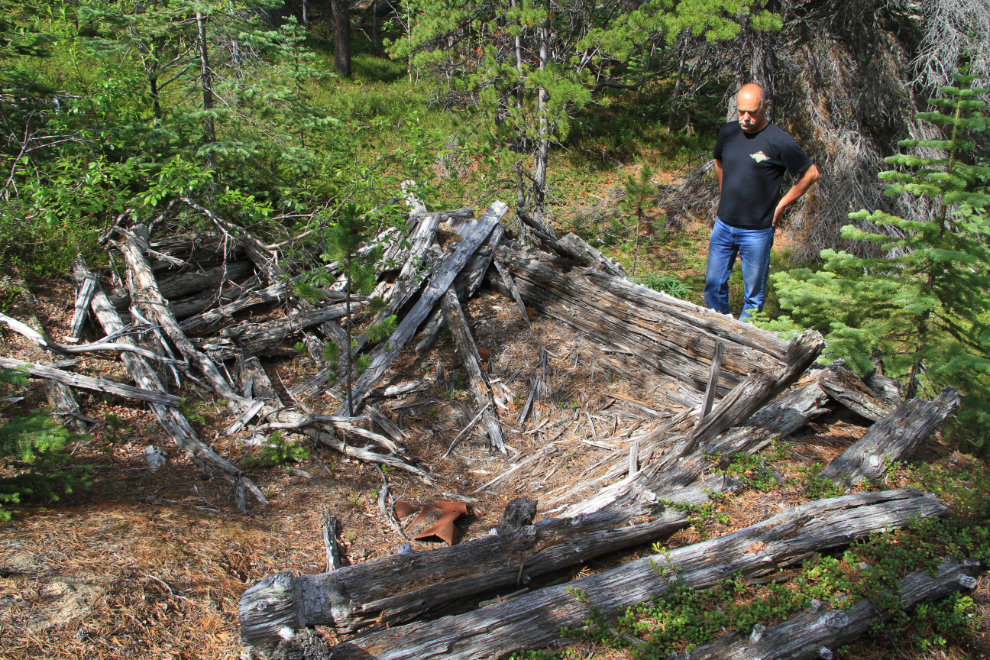
In the winter, a visit to Bennett becomes a rather mystical experience. To reach the site, you have to snowshoe, ski, or snowmobile 42 kilometers (26 miles) from Carcross or 13 kilometers (8 miles) from Log Cabin, and very few people do. The solitude, and perhaps the fact that winter brings you closer to the experience of the Klondike stampeders during the winter of 1897-98, makes this a unique and very special experience.
Bennett is a very quiet place in the winter now, unlike the hectic winter of 1897-98.
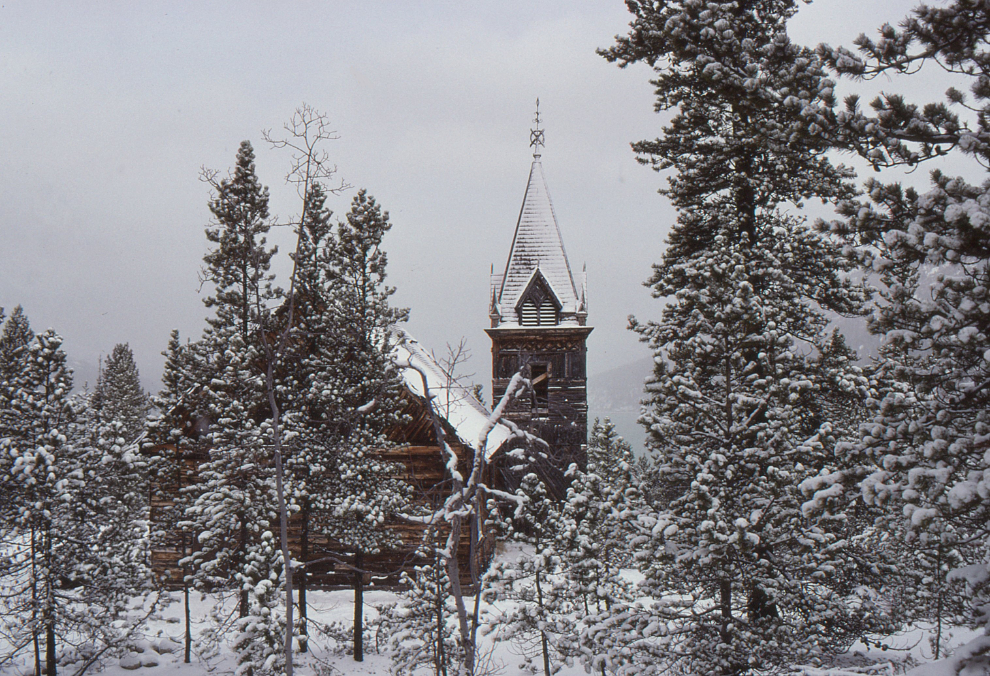
There are four ways to reach Bennett during the summer now – by train, on foot, by boat, or by float plane. Most people arrive on a White Pass & Yukon Route train, and almost everybody leaves Bennett on one. A very high percentage of train passengers are cruise ship passengers going to or returning from Carcross, but a growing number are going up on the railway’s Bennett Camping Adventure from Carcross, which allows people to camp at Bennett or in the area for a few days.
White Pass & Yukon Route train guide Peter Carr watches as we leave Bennett.
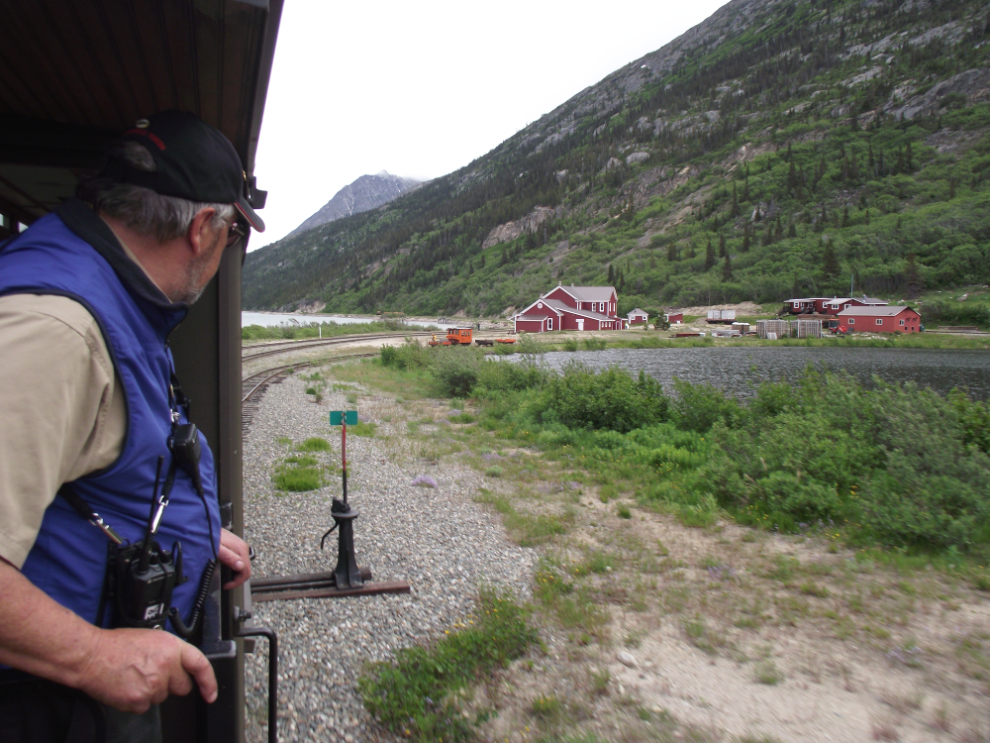
The second most common way to reach Bennett is to hike the 53.1-kilometer (33-mile) Chilkoot Trail from Dyea, Alaska. Many hikers used to take a trail just north of Bare Loon Lake that led to the railway and then hike back to the South Klondike Highway at Log Cabin. In 2010, however, Parks Canada closed the Cutoff Trail due to concerns about people walking along an active railway, and all hikers now have to go to Bennett and take the train back to Log Cabin, Fraser, or Skagway. On my first Chilkoot Trail hike in May 1997, which I did solo, I hiked to Bennett and then another 42 kilometers (26 miles) along Lake Bennett to my lakeshore cabin at Carcross, but in July 1997, my son and I used the Cutoff Trail to get back to Log Cabin where we had left a car.
The author and his son nearing Lindeman Lake on the Chilkoot Trail.
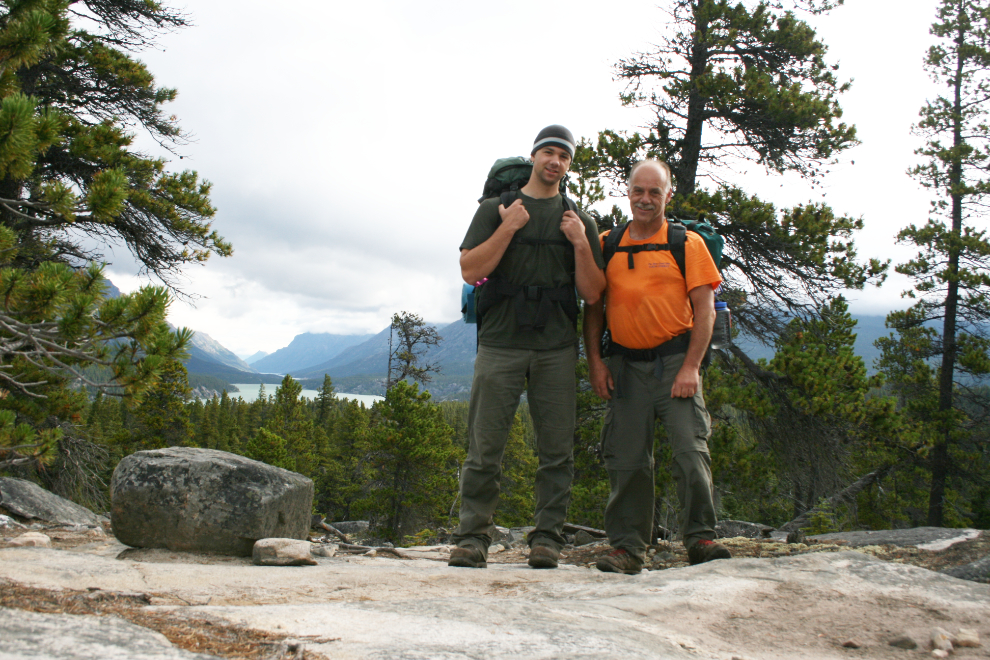
A few people visit Bennett by boat from Carcross. The scenery along Lake Bennett is spectacular, but strong winds can blow up very quickly, and regardless of what type of boat is used, boaters need to be prepared for unplanned overnight stays along the lake. With the canoe/kayak rental operation in Carcross having closed at the end of the 2015 season, the nearest one is now in Whitehorse, and there are no power boat rentals.
Heading home from Bennett with my dogs by canoe.

Each year, a few people charter float planes in Whitehorse to reach Bennett – certainly the most scenic as well as the most expensive way to explore one of BC’s most remote ghost towns.
